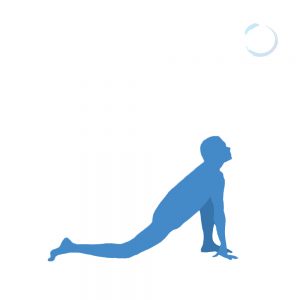
O Pūshan! O Sun, sole traveller of the heavens, controller of all…
Withdraw Thy rays and gather up Thy burning effulgence.
Now through Thy Grace I behold Thy blessed and glorious form.
The Purusha who dwells within Thee, I am He.
– Isopanishad
Surya Namaskar is one of the most popular and most important practices in modern yoga. It is a practice that has its roots in ancient vedic and tantric traditions. During Sun Salutations the body moves through a sequence of 12 postures that are said to correspond to the 12 months, zodiac signs, 12×2 hours of the day. It is to note also that many ancient civilizations used the duodecimal numerical system not the decimal system we use today. Traditionally Surya Namaskar was a daily routine practiced under the rising sun of the early morning. Nowadays it is a part of the warm-up routine in Hatha Yoga classes.
Surya Namaskar is sometimes practiced with the repetition of certain sound formulas (mantras) and focal points of concentration that deepen the meditative experience of the practitioner. With its combination of sound, posture and breath, Surya Namaskar can stand as a full sadhana that combines meditation / nada yoga, asanas and pranayama.
Stand on the top of your mat with your feet together of hip-width apart. Balance your weight equally on both feet. Extend your posture, feel the base of your spine lengthening down, the crown of your head lifting up, keep your chin parallel to the floor, open your chest and relax your shoulders and let your arms relax beside your body, the palms naturally turned in.

As you inhale, lift your forearms up from the sides and as you exhale, bring your palms together in front of the chest in anjali mudra (prayer position).
Bring all your awareness in. Focus on your heart center. Invite the feelings of gratitude and homage.
Be PRESENT.
Surya Mantra: Om Mitraya Namah.

Inhale. Lift the arms up overhead and back. Look up between your hands let your arms and ear move together as you arch back (the curve of the neck continues that of the upper back). Push the pelvis forward and extend your torso till you feel the pull between your ribs, in your abdominal organs and along your flanks. Make sure your knees are straight as you arch back. Keep your arms parallel and shoulder width apart, elbows straight, and palms facing forward. The whole frontal aspect of the body is stretched up here. Feel the stretch from the heels to the tips of the fingers.
If you have back issues (scoliosis, weakness, impingement syndrome), do not arch back, lengthen your spine up instead.
Surya Mantra: Om Ravaye Namah.
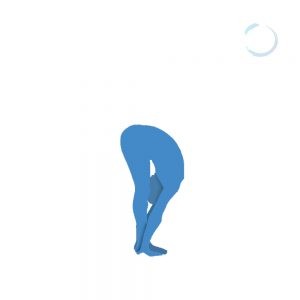
Exhale. Bend forward from the hips, keeping the spine lengthened, the arms extended. As you bend make sure to pull your hips up and keep your sit-bones tipping. Reach to the floor and place your palms on beside the feet, with the fingers and toes aligning to one line. Exhale completely and contract your abdomen. Straighten the knees if possible, and bring your chin to your shinbones. If you have lower back issues you may feel more comfortable to use one of the following adjustments: a. bend your knees as you fold forward, b. place the palms in front of the chest in anjali mudra or stretch them to the sides as wings as you ford to minimize the weight your back is holding.
Surya Mantra: Om Suryaya Namah.

Inhale. Step your right foot backward as far as possible, drop your knee to the floor and relax your foot pointing the toes backward. The palms and the left foot remains in place. Lift your head comfortably, lengthen your spine and open your chest as much as the body allows without lifting your palms. Push your pelvis gently forward but not moving your right foot, and not allowing left knee to exceed the left foot. Gently gaze forward and up.
Surya Mantra: Om Bhanave Namah.
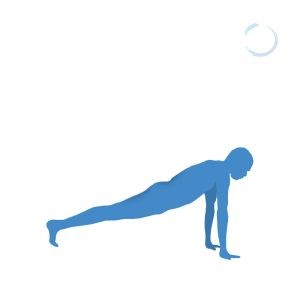
Holding the breath, curl the right toes under the right foot, push with your hands and step your left foot backward. Place it beside the right foot tucking the toes under the feet. Bring your body to one straight line. Engage your arms and slide your shoulders away from your ears and your shoulder blades away from one another. To stabilise the torso, engage the muscles of your chest and abdomen. Engage your glutes to keep the tail bone in, your thighs to straighten the knees. Keep your neck in a neutral position. Gaze down. This posture is also known as Dandasana, Chaturanga Dandasana and Kumbhakasana.
Surya Mantra: Om Khagaya Namah.
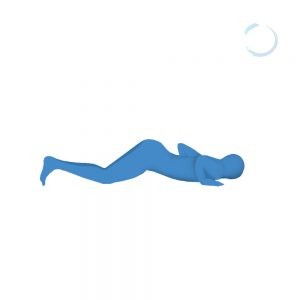
Exhale. Drop your knees to the floor raise your hips slightly up, keeping your pelvis off the floor. Roll your shoulders away from your ears, draw your shoulder blades down along your back and slide them together, take your upper arms / elbows nearer to your torso, all this will help open your chest. Drop the chest between your hands, and tucking your chin gently in so that your forehead may rest comfortably on the floor in front of the mat.
Surya Mantra: Om Pushne Namah.

Inhale. Slide forward. Drop your hips down and push them to the floor. Lift your chest up. Lift your head. Keep your elbows bent toward the ribcage, your shoulder rolled backward and down, your shoulder blades down and together. Open your chest. Lengthen your spine and neck. Keep the legs parallel or together and push them to the floor. Do not allow your feet to point towards one another. Lengthen your body. Look forward and up.
Surya Mantra: Om Hiranyagarbhaya Namah.
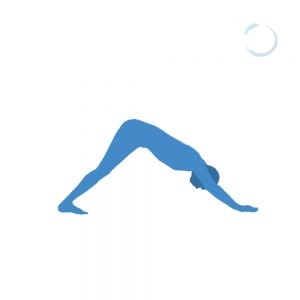
Exhale. Curl your toes under and lift your hips backward and up. Push with your palms. Straighten your elbows. Lower your chest and head down to the space between your arms. Straighten your legs, engaging your thighs. Push your heels towards the floor as much as possible. Bring your body into an inverted ‘V’ position. Keep your shoulders away from your ears. Lengthen through your back and legs. Gaze at your toes.
Surya Mantra: Om Marichaye Namah.
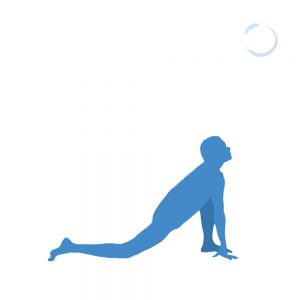
Inhale. Step your right foot forward to the space between your hands. drop your left knee to the floor and relax your foot pointing the toes backward. Lift your head comfortably, lengthen your spine and open your chest as much as the body allows without lifting your palms off the floor. Push your pelvis gently forward without moving your right foot, and not allowing right knee to exceed the left foot. Gently gaze forward and up.
Surya Mantra: Om Adityaya Namah.

Exhale. Step you left foot forward to the top of the mat beside the right foot. Now your toes and fingers are once more aligned. Exhale completely and contract your abdomen. Straighten the knees if possible, and bring your chin to your shinbones. Keep your thighs engaged, tailbone and sit-bone tipping up. If you have lower back issues keep your knees bent.
Surya Mantra: Om Savitre Namah.
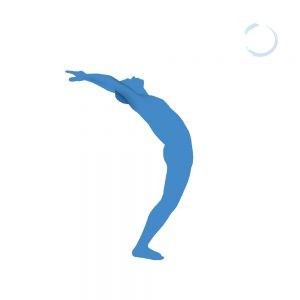
Inhale. Stretch your arms forward and up. Align your upper arms and ears together. Lift your chest. Lift the arms up overhead and back. Look up between your hands. Push the pelvis forward and extend your torso till you feel the pull between your ribs, in your abdominal organs and along your flanks. Make sure your knees are straight as you arch back. Keep your arms parallel and shoulder width apart, elbows straight, and palms facing forward.
If you have lower back issues, bend your knees as you lift your arms and torso up. Make sure you are not rounding your back. When your body reaches the vertical position make sure to straighten you knees before you arch back. If you have scoliosis or weak back avoid going into a deep back bend.
Surya Mantra: Om Arkaya Namah.
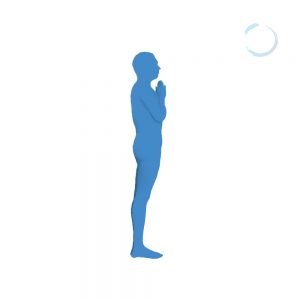
Exhale. Come back to an erect position. Palms together in front of the chest in Anjali mudra. Bring all your awareness in, focus on your heart center. Invite the feelings of gratitude and homage. Be PRESENT.
Surya Mantra: Om Bhaskaraya Namah.
After returning to position 1, repeat moving the other leg this time. One round consists of 24 moves, 6 on each leg leading. 6 to 12 rounds of Suryanamaskar are usually practiced in classic Hatha classes.